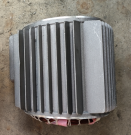


Understanding Lever Chain Blocks A Comprehensive Overview
In the realm of mechanical systems and industrial applications, the lever chain block has emerged as an invaluable tool. Lever chain blocks, also referred to as lever hoists, are mechanical devices designed to lift, lower, and pull heavy loads with remarkable ease and efficiency. This article delves into the intricacies of lever chain blocks, highlighting their design, functionality, applications, and safety measures.
What is a Lever Chain Block?
A lever chain block is a type of hoisting device that utilizes a lever and a chain to lift heavy objects. Typically constructed from robust materials, these tools are engineered for durability and strength, making them ideal for heavy lifting tasks. The device consists of several key components, including a main frame, a lever arm, a chain wheel, and a load chain. When the lever is pulled down, it engages the load chain, which then wraps around the chain wheel, effectively lifting the load attached to the hook at the end of the chain.
How Does It Work?
The operation of a lever chain block is straightforward yet highly effective. As the user pulls the lever down, the mechanical advantage provided by the system allows them to lift significantly heavier weights than they could with sheer human effort alone. The lever arm translates the force from the user’s hands into a greater lift force, thanks to the principles of leverage. This design means that a relatively lightweight individual can lift several tons of equipment or materials with minimal physical exertion.
The load’s weight can be adjusted by controlling the amount of chain that is pulled through the block, giving the operator fine control over the lifting process. This is especially beneficial in construction and manufacturing environments where precise movements are critical.
Applications of Lever Chain Blocks
Lever chain blocks are highly versatile and find applications in various industries, including construction, manufacturing, shipping, and automotive sectors. They are frequently used to
2. Load Distribution In warehouses and docks, these devices help in loading and unloading shipments, allowing for better warehouse organization and efficiency.

3. Maintenance Work In automotive and mechanical repair shops, lever chain blocks assist technicians in lifting engines and other heavy components, facilitating repair and replacement tasks.
4. Rigging Applications They are vital tools in rigging, providing support in activities like marinas and stage setups for concerts or events.
Safety Considerations
While lever chain blocks are designed to handle substantial weights, safety should always be a primary concern. Operators must adhere to several safety guidelines to ensure their well-being and those around them. These include
- Regular Inspections Before usage, it's crucial to inspect the lever chain block for any signs of wear or damage. Components should function smoothly without any obstruction.
- Proper Weight Limits Operators must be aware of the load capacity of their chain block. Exceeding this limit can result in catastrophic failure, potentially leading to injuries.
- Stable Ground The ground on which the lever chain block is used should be stable and free from hazards to prevent accidents during lifting.
- User Training Proper training on how to use the lever chain block is essential for effective and safe operation. Understanding the device's mechanics and capabilities can prevent mishaps.
Conclusion
Lever chain blocks have proven to be one of the most effective tools for lifting and moving heavy loads in a wide range of industries. Their mechanical design provides ease of use, allowing operators to handle substantial weights with minimal effort. As industries continue to evolve and grow, the importance of such tools cannot be overstated. By adhering to safety practices and understanding their application, workers can maximize the efficiency and safety of their operations. The lever chain block remains a critical ally in the pursuit of modern industrial tasks, symbolizing the perfect balance of innovation and practicality in mechanical engineering.



